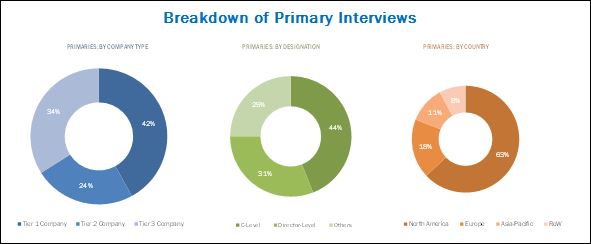Medical animation is an educational video or movie created using 3D motion graphics to explain the mechanism of action (MoA) of a medical device, biomedical technology, pharmaceutical drug, or an anatomical or biological process. Animations are used in the medical & pharmaceutical sectors for educational purposes, demonstrations, simulation of surgeries, and analysis and comparative evaluation of treatment among others.
The medical animation market is poised to reach USD 301.3 Million by 2021, growing at a CAGR of 20.8% during the forecast period of 2016 to 2021. The growth of the overall market can be contributed to the rising adoption of medical animation by pharmaceutical and life sciences companies; entry of start-ups; growing pharmaceutical/biopharmaceutical and medical devices industries; increasing penetration of smartphones, tablets, and other mobile platforms; and rising geriatric population coupled with the growing number of surgeries globally.
In the coming years, the market is expected to witness the highest growth rate in the Asia-Pacific region. North America is expected to account for the largest share of the global medical animation market. However, the high cost of medical animation services is expected to restrain the growth of this market to a certain extent.
Download the PDF Brochure@ http://bit.ly/2TXQwXh
Objectives of the Study
- To define and measure the global medical animation market on the basis of type, application, therapeutic area, end user, and region
- To identify key micromarkets and their drivers within the market, which are expected to show impressive growth opportunities in the coming years
- To analyze opportunities in the market for stakeholders and provide details of the competitive landscape for market leaders.
- To strategically analyze the market structure and profile the key players of the market and comprehensively analyze their core competencies
- To forecast the size of the market segments with respect to four regions, namely, North America, Europe, Asia-Pacific, and the Rest of the World (RoW)
- To track and analyze competitive developments such as agreements, collaborations, and partnerships; marketing and promotions; and new product launches
Research Methodology:
Top-down and bottom-up approaches were used to validate the size of the global medical animation market and estimate the size of various other dependent submarkets. Various secondary sources such as directories, industry journals, databases such as Hoover’s, Bloomberg Business, Factiva, and Avention, and annual reports of the companies have been used to identify and collect information useful for the study of this market. Primary sources such as experts from both supply and demand sides have been interviewed to obtain and validate information as well as to assess dynamics of this market. The breakdown of profiles of primaries is shown in the figure below:

On the basis of end user, the medical animation market is segmented into life science companies; medical device manufacturers; hospitals, surgical centers, and clinics; academic institutes, and other end users (medico-legal firms, forensic departments, government bodies, and insurance companies). The life science companies segment is expected to account for the largest share of the market in 2016 and is projected to grow at the highest CAGR in the forecast period.
Read More Detailed information | Get the Sample Pages@ http://bit.ly/2zzrpl1
Geographically, the global medical animation market is divided into North America, Europe, Asia-Pacific, and the Rest of the World (Latin America, Middle East, and Africa). North America is expected to account for the largest share of the medical animation market in 2016, followed by Europe, Asia-Pacific, and the Rest of the World. The Asia-Pacific market is projected to grow at the highest CAGR, and serves as a revenue pocket for companies offering medical animation.
Prominent players in the global medical animation market include Infuse Medical (U.S.), Hybrid Medical Animation, Inc. (U.S.), Ghost Productions, Inc. (U.S.), Scientific Animations, Inc. (U.S.), INVIVO Communications, Inc. (Canada), Random42 Scientific Communication (U.K.), Radius Digital Science (U.S.), Nucleus Medical Media, Inc. (U.S.), AXS Studio, Inc. (Canada), Visible Body (U.S.), Elara Systems, Inc. (U.S.), Animated Biomedical Productions (Australia), XVIVO Scientific Animation (U.S.), Blausen Medical Communications, Inc. (U.S.), Trinsic Medical Animation, LLC. (U.S.), Viscira (U.S.), Understand.com (U.S.), and Medmovie, Inc. (U.S.).